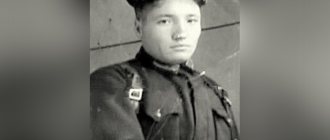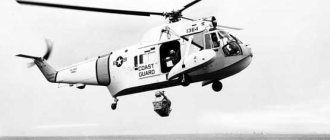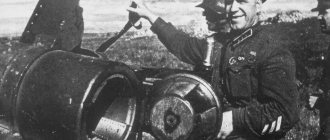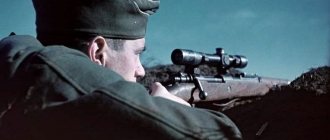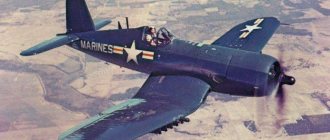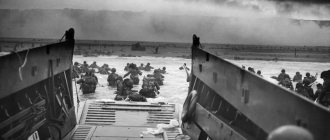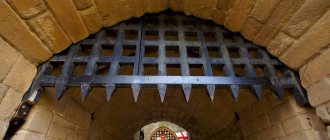Billy Dixon
The history of wars records the names of trained snipers who distinguished themselves by their exploits and achievements. But sometimes the “shot of the century” comes from simple buffalo hunters like Billy Dixon.
| Time | Place | Distance | Target |
| 1864 Indian-Colonist War | Edowby Walls, Texas, North America | 1.5 kilometers | Indian on horseback |
To make a well-aimed shot from such a distance, the sniper must accurately determine it, take into account the speed and trajectory of the bullet, and have a “hawk's eye.” After all, in the 19th century there were no optical sights.
That day, Billy Dixon helped save the settlement from the Indians, and then fought at Buffalo Wallow. For his accuracy and courage in battle, he became one of eight civilians awarded the Order of Honor.
Navy SEAL snipers
After pirates failed to capture his ship, the Maersk Alabama, Captain Richard Phillips surrendered to the bandits in order to guarantee the safety of his crew.
The pirates kept Captain Phillips aboard a lifeboat for several days while attempting to negotiate with the US Navy. But eventually the boat ran out of fuel and the pirates agreed to allow the US Navy to attach a tow rope from the USS Bainbridge to the boat.
This move allowed three US Navy SEAL snipers to take up positions on the overhang of the Bainbridge's stern - just 75 feet (23 m; hereinafter - mixednews.ru note) from the pirates.
Overcome by seasickness and in an excited state, the pirates became more and more aggressive. The command on the spot, concerned about the mortal danger threatening Phillip, gave the snipers the go-ahead to destroy the pirates to save the life of the captain.
The SEALs had to fire synchronized shots in order to take down both the pirates and the captain to remain alive. The snipers were on a ship sailing on the ocean, and their targets were in a boat bouncing on the waves, and they only had one chance to do everything right.
Once he gets it, they can all fire. And now, an opportunity - the third pirate, tormented by seasickness, sticks his head out of the boat window.
The third cat transmits - the target has been detected. All three snipers take their shots.
Second Lieutenant Simo Häyhä
Sometimes a sniper is a lone warrior, for whom the military task is inseparable from personal principles. Finnish marksman Simo Häyhä, nicknamed “White Death,” is the most elusive sniper. His rifle never missed a beat.
| Time | Place | Officially killed | Actually killed |
| 1939-1940, Soviet-Finnish War | Raivola, Kolla, Ladoga Karelia | 219 | 505-542 |
Häyhä set the goal of killing as many Red Army soldiers as possible. On average, five people died from his bullets every day. Killers were specially sent for Simo Häyhä. But the Finn blended in with the environment and struck first. Only once did a Russian soldier wound him in the cheek, but immediately received a fatal bullet in response.
Häyhä grew up in a border village in a family of simple peasants. Before the war, he served in a security detachment and was the best shooter. The invincible sniper lived a long life and died in 2002 at the age of 96.
History[edit]
The world's first silent sniper rifle, the Windbüchse, was the weapon of the huntsmen of the First Reich, and was an air-powered Sharps rifle with a conventional and optical sight, the weapon of soldiers nicknamed sharpshooters.
Origin[edit]
Despite the fact that the term “sniper” appeared only at the end of the 19th and beginning of the 20th centuries, the “profession” of a marksman is as old as humanity itself. Since the first homo picked up a stone or a stick and threw it at the enemy, there have always been those who throw further and more accurately than others. With the advent of the sling and bow, this only intensified. Paris, who killed Achilles with an arrow to his only weak spot (heel), can rightfully be considered a sniper. However, the ancient Greeks attributed the shot to the hand of Apollo. Richard the Lionheart died from a well-aimed crossbow bolt fired from the fortress wall at maximum distance, and it was not a volley, but a shot from a single warrior. In medieval Europe, marksmanship competitions took place annually in almost all cities; the archives of city chronicles are replete with reports of how experienced hunters, mercenaries and even knights specially came to compete in the accuracy of archery and crossbow shooting. After the advent of firearms, professional shooters also appeared. The famous sculptor and jeweler Benvenuto Cellini, having enlisted in the papal army, quickly learned to hit an apple from 200 steps, and in 1527, during the siege of Rome, he killed the French constable from 250 steps[9]. During the English Revolution, during the siege of Lichfield (1643), Lord Brookes was killed by a sniper hit in the head from 150 yards, and the lord only stuck his head out of cover. Royalist John Dyot, who to this day in England is considered the first sniper in the history of the country, fired from a long hunting rifle from the roof of the cathedral. As the weapon improved, the results became more and more impressive.
Rifled weapons have improved shooting accuracy significantly. During the American Revolution, colonial hunters, dressed in green and carrying the legendary Kentucky rifle, shot at British soldiers at a distance three or even four times further than the British themselves could shoot. The British, having suffered from them, created the famous 95th Infantry Regiment (well described in the novel “Sharpe’s Fusiliers”). The Napoleonic wars made massive use of marksmen, who appeared in all armies. Jaegers, chasseurs, plastuns, mostly recruited from hunters and residents of the border regions of the country, where a single accurate shot at an animal separated life from death, showed the effectiveness of this type of troops. If the concept of “grenadier” has always been associated with a tall soldier, brave in bayonet combat, then “voltigeur” has become synonymous with a small shooter, fearless in the front line under fierce enemy fire. During the Crimean War, the British had fun shooting from rifles at Russian officers, achieving hits from 500 meters. However, the first snipers in the form in which we know them now appeared during the Boer War.
The English word “Snipe” itself means “snipe”, and “Sniper”, accordingly, is someone who is interested in hunting snipe. Since this is a very shy bird with fast, uneven flight, the hunter is required to have extreme composure, patience, and the ability to camouflage and wait. Thus, the name emphasizes not so much the ability to shoot accurately, but the ability to do so from an ambush.
World Wars I and II[edit]
Meanwhile, the armies are saturated with weapons. Bullet, mine, fire and grenade launchers, artillery and aviation spotters, and radio operators appear on the front line; The value of a junior commander is growing - before the battle he studied data from several types of intelligence, important instructions were sent down to him from above, and in battle he is on the front line and keeps in touch with the commanders of several branches of the military. The army is turning into a system of many interconnected elements. And now we need people who, without being a noticeable target themselves, can find and kill fighters with especially lethal weapons or people important in organizing the battle without any special material costs. The trench warfare of the First World War only reinforced this. When there is nothing else to do except shoot from trench to trench, snipers come to the fore and rack up huge scores[11].
The Second World War gave birth to thousands of legendary snipers. It was this war that finally absorbed and consolidated the methods of waging sniper warfare; Since then, nothing radically new has been invented, they have only developed what was available.
Post-war era[edit]
Carlos Hathcock - one of the most prolific snipers of the Vietnam War
Without bringing anything radically new, except for improved rifles and scopes, it was this era that gave birth to many legendary Western snipers. American snipers did not particularly distinguish themselves in WWII, but there were plenty of them in Vietnam, Iraq and Afghanistan. Of particular note is the proliferation of large-caliber rifles, of which the international contingent in Afghanistan likes to set records for the range of effective shots. Norwegians, British, Canadians, New Zealanders and Americans were hit at ranges greater than 1000 meters. At a range of over 2000 meters, hits were recorded: one American (weapon - Barrett M82A1, 2150 meters), two Canadians (McMillan Tac-50, 2310 and 2430 meters) and a British (Accuracy International L115A3, 2475 meters, but many doubt the veracity of the statement) . There is, however, a nuance. With the advent of ballistic computers that automatically calculate corrections taking into account a dozen or so factors, “long-range” shots at a distance of 1000+ meters are no longer something out of the ordinary. During World War II, when the only computer was the shooter’s own eye, even 800-900 meters were considered a very long distance.
And there is a second nuance: the fact is that the equipment of such a “tent” sniper includes, in addition to the computer, a bulky thermal imager (and other interesting visors) and heavy batteries for the equipment. Because of this, their mobility and autonomy are very limited, and normal snipers, who still run (and crawl in full view of enemies) with an antediluvian rifle made in 1891, look at such specialists as shit. In addition, there is a saying “trust your
eyes” - of course, high-tech surveillance devices help in work, but they do a lot of harm, and first of all, the person who looks at the screen forgets how to see the world. And, believing in his own technological invulnerability, he falls for a whole bunch of old tricks.
Army and police sniper[edit]
Police sniper
Despite the seemingly similarity in work, the tasks of army and police snipers are significantly different and, accordingly, their training also differs. For example, a police sniper, unlike an army sniper, does not need camouflage, since there is no danger posed by enemy snipers or artillery. Also, a police sniper must be guaranteed
hit the enemy’s vital organs, say, the brain or heart (which is especially critical in the case of hostage situations), while for the tasks of an army sniper this is not always possible due to long distances. Moreover, it is believed that a wounded enemy is more advantageous militarily, since resources must be deployed to evacuate and treat him.[12]
The big difference is the distances at which snipers work, and, accordingly, the choice of weapons. A police sniper works in an urban environment, and the distance rarely exceeds several hundred meters. The main weapons of police snipers are rifles chambered in standard cartridges like 7.62x51 (precisely due to the combination of relatively low range and muzzle energy). Naturally, for certain tasks (for example, shooting through windows or forcibly stopping vehicles) more powerful weapons are used.
An army sniper tries to work beyond the effective range of small arms fire. For example, the military regulations of the US Army prohibit “working” at a distance closer than 300-400 m, since a sniper can be suppressed by fire from machine guns and grenade launchers. Therefore, long-range rifles are more common among army snipers, in particular, those chambered for .338 Lapua-magnum (8.6×70 mm), which allow firing at a distance of up to 1500 m.
Marksman[edit]
Marksman
or
an infantry sniper
- a soldier operating as part of a military unit whose task is to provide fire support to his colleagues. As a rule, this is a soldier who shows the best results in shooting with standard weapons, for which he is issued a semi-automatic sniper rifle (the so-called DMR) and basic knowledge of sniper business. An important clarification: a Marksman, as a rule, is not a full-fledged sniper because he is not trained in camouflage and survival skills - this is not necessary for his tasks.
Marksman, as a separate type of shooter, appeared at the beginning of World War II in the Third Reich, when the best shooters in an infantry company began to be issued rifles with a ZF-41 sight mounted directly on the sighting bar.
After the war, some countries (in particular the USSR and the USA) focused specifically on Marksmen as support for advancing/defending infantry, to the detriment of full-fledged sniper training [13], however, a series of local conflicts, such as the Vietnam and Afghan wars, showed that both sniper skills are needed specialties.
Cuckoo snipers[edit]
Cuckoo snipers
- one of the symbols of the Winter War: according to numerous reports from Red Army soldiers, Finnish snipers en masse took up positions in the trees. Not to say that this is 100% a myth: at least occasionally, such tactics were reliably used by the Finns, but the glory of the Finnish “cuckoos” is greatly (very greatly!) exaggerated. In fact, such a choice of position turns the sniper into a suicide bomber: he has no opportunity to move, no cover, so he will live exactly until he is discovered.
However, cuckoos as a mass phenomenon historically existed quite well, but not in Finland, but quite the opposite, in Japan: such tactics fit very well into the national mentality. On the Pacific front, Japanese snipers significantly battered the Americans, but history does not know ace snipers from the Land of the Rising Sun. The answer is simple: the snipers were “disposable” and worked from the trees, well camouflaged and motivated to exchange their lives for the lives of a dozen wide-eyed gaijin.
Famous personalities[edit]
- Older than the radio: "Jack the Nailer" - a semi-legendary marksman from the Sepoy Rebellion
- Thomas Plunkett is a legendary English sniper from the Napoleonic Wars.
- "Old Jack" Hinson was a Confederate sniper who continued to fight the Unionists after the war was lost. I used a Kentucky flintlock.
- Herbert McBride - the best English sniper of the First World War. Author of the book “The Shooter Went to War,” which for the first time outlined the principles of sniper work that are used to this day - the importance of camouflage, observation and recording of meteorological data, “free hunting” tactics, etc.
- Francis Peghamagabo - the most prolific sniper of the First World War. With 378 kills counted, Peghamagabo had maxed out his stealth and was not only a sniper, but also a master at snooping around enemy trenches, earning him the nickname “Trench Ghost.” This made him an excellent scout, saboteur and courier, capable of delivering messages through enemy-occupied territory. He used to come from enemy trenches not alone, but with prisoners, and in total he dragged about 300 of them.
- Ivan Kulbertinov (“Siberian Midnight”) - Yakut. Sniper score - 487.
bullets (she didn’t even make him disabled, she just disfigured his face). And he looked short [14] (152 cm, which helped him hide and “get frags”), a small little man, the most simple-looking, with a friendly and smiling face. You can often come across the statement that Häyhä is the most productive sniper in history, but this is not true - at least three Soviet snipers are guaranteed to exceed his score: M. Surkov (702), V. Salbiev (601) and V. Kvachantiradze (534) .
- There is widespread information that Häyhä, in addition to killing 500+ with a rifle, also shot more than 200 Red Army soldiers with a submachine gun and also strangled more than 100 Red Army soldiers with his bare hands. However, his result is often disputed, since it was not officially recorded anywhere, and there was no system for confirming sniper scores in the Finnish army of that time. In addition, 19 days before the wound that ended his career, Häyhä was awarded a personalized rifle for killing 219 Red Army soldiers. This number is the only more or less official evidence of his account. In addition, Simo's stories about the number of killed Red Army soldiers sharply diverge from the reports of the Red Army about losses in the areas where he worked.
- The Lobaev brothers' arms company published a video of shooting at a distance of 3,450 meters back in 2014, but the spread between the three sighting shots was almost 5 meters. The value of fire from rifled firearms at such a distance becomes more questionable, which is indirectly confirmed by the work on the Felt-Master R&D project.
Master Corporal Rob Furlong
A Canadian sniper distinguished himself during Special Operation Anaconda, setting a new record for a long-range shot. The previous record was set by American Carlos Hascock. In addition to accuracy, Furlong has the ability to shoot with both hands.
| Time | Place | Distance | Target |
| 2002-2009, war in Afghanistan | Shahi Kot Valley | 2430 meters | Al-Qaeda militant |
The well-aimed shot brought not only fame, but also drew attention to the issue of the legality of using Canadian snipers. After a long investigation and interrogation, Furlong resigned and joined the police.
Shooter (2007)
Bob Lee Swagger is a former Marine, famous among his colleagues for his ability to hit a target even at a considerable distance. After finishing his service, the retiree settled in a small house in the mountains, and spent almost all his time there, until one day Colonel Johnson came to see him. An unexpected visitor has an important request: to track down an experienced sniper planning to assassinate the head of state. Having agreed to this business, Bob soon realizes that he has become embroiled in a dangerous conspiracy.
Trailer
Original title : Shooter Actors : Mark Wahlberg, Michael Peña, Danny Glover... Country : USA Rating : Kinopoisk – 7.6, IMDb – 7.2 Age restrictions : 16+
Chief Officer Chris Kyle
During his years of service in Iraq, American Christopher Scott Kyle received the nickname “Legend” from his colleagues, and “Shaitan” from his opponents. Tens of thousands of dollars were offered for his head. Kyle is the most productive sniper according to the US Army command.
FOR TV WEEK - DO NOT PURGE - STARS EARN STRIPES - Season: 1 - Pictured: Chris Kyle - (Photo by: Chris Haston/NBC)
| Time | Place | Officially killed | Actually killed |
| 2002-2009, Iraq War | Fallujah, Ramadi | 160 | 255 |
Chris is from Texas, a state where even priests shoot. He knew how to handle weapons from the age of eight thanks to the lessons of his father, a church minister.
Kyle was shot and killed in 2015 by former Marine Eddie Routh, who suffered from post-traumatic stress disorder. His exploits were immortalized in the Clint Eastwood film American Sniper.
Captain Vasily Zaitsev
The world-famous participant in the war against the Nazis learned to disguise himself and shoot accurately from his childhood, which he spent in the Ural taiga with his grandfather-hunter. Vasily went to the front after the fifth petition, and in battle he invariably followed the advice of his father, a guardsman in the imperial army, to save ammunition. Therefore, he shot without missing a beat.
| Time | Place | Total killed | Killed snipers |
| 1942-1945, Great Patriotic War | Stalingrad, Donbass, Odessa | 242 | 11 |
Zaitsev surpassed his fellow opponents with imagination and unconventional thinking. He became an innovator in the art of sniper. Inventions of Vasily Zaitsev:
- changing position after shots;
- distracting the enemy's attention;
- arrangement of sniper pairs - shooter and observer;
- keeping records of landmarks, convenient locations, distances to enemy shelters.
The hero of the Battle of Stalingrad, Vasily Zaitsev, compiled two textbooks on sniper shooting and gave instructions. His methods are used in the modern Russian army.
General information[edit]
Modern sniper equipment: rifle, laser rangefinder, compact weather station and ballistic calculator
(link)
A little materiel
| « | Three people can’t light a cigarette from one match: the first one lights it, the drill notices; the second lit a cigarette - the drill took aim; the third lit a cigarette and the drill fired. | » |
| — The harsh truth of life during the Boer War. | ||
Sniper and spotter
The profession of a sniper is not only about shooting far and accurately, as some people think[3]; this is the ability to hide, wait for the right moment and fire one shot, and then change position, because a sniper who “burned” his position is a dead sniper. “War is not just about who will shoot who. War is about who will change someone’s mind,” as Sergeant Major Vaskov said. There are a lot of subtleties in sniper business:
- Position selection. The position should give a good overview, there should be a place for retreat[4], the sun should shine in the back[5] and other little things.
- The mathematics of shooting. Before the shot, a whole set of calculations is performed. Correction for distance, for bullet rotation, for wind, for temperature differences in air layers[6]. At long distances, the Coriolis force comes into play, which large-caliber snipers have to take into account.[7]
- Disguise. One of the most important aspects. A sniper must have an extremely rich imagination, because patterned actions lead to death. The main rule is that people don’t see what they don’t want to see. During WWII, one German sniper dug a position under the decaying corpse of a horse; during the Chechen War in Grozny, snipers disguised themselves as a pile of garbage. In this case, it is necessary to mask the sound of the shot[8] and the powder gases. Often snipers prepare several positions, including a deceptive one, which is made with a little carelessness and which the enemy will be distracted by.
- Deceptions for the enemy. The most dangerous enemy of a sniper is another sniper, but to find him, it is advisable to provoke the enemy to shoot. For this purpose, various tricks are used, from a banal helmet on a stick to complex mannequins that smoke cigarettes through a special tube. However, ordinary soldiers also don’t like to die, so sometimes snipers at night scatter various valuables across the no-man’s land (70 years ago it was a watch, now they like to scatter broken sights). There will always be a freebie lover who is ready to risk his life for this and crawl out into the area under fire. A separate category includes various rags and ropes near enemy positions - they help to clearly determine the speed and direction of the wind. This is why snipers hate clothes hanging out to dry on the front lines to the point of gnashing their teeth.
- Control of your own physiology. Heartbeat, breathing, microscopic muscle tremors, blurred vision, level of excitement - everything affects the accuracy of the shot. Previously, snipers used improvised substances: carrots with sour cream or oil for the eyes (carotene does not dissolve in water, but dissolves in fat), a piece of refined sugar and a drop of lemon juice (increases visual acuity for 10-15 minutes), herbal infusions for calming . Now pharmaceutical products have come into play. In science fiction they like to use genetic intervention, as a result of which snipers of the future do not breathe, their hearts do not beat, and their eyes see a matchbox a kilometer away. And, yes, physiology also includes some natural needs that also need to be controlled: sometimes you have to lie motionless in a position for many hours, what about trips to the toilet.
These are all vital skills that directly affect a sniper's coolness, but which are usually overlooked in the art. Who is interested in reading or watching how a sniper lies in his “hole” for a day, while calculating the distance to landmarks using complex formulas? Who wants to see a cold-blooded sociopath on our “good” side?
- Well, I don’t know, the author of the edit likes anti-heroes most of all, and precisely this type. A cynical, pragmatic creature.
Lyudmila Pavlichenko
Before the war, rifle shooting was just a hobby for Lyudmila. The ability to shoot accurately was discovered after a random trip to the shooting range. After graduating from the sniper school and the history department, the Kiev resident was going to practice in Odessa. But after the announcement of the offensive of German troops, she volunteered to go to the front to defend her homeland.
| Time | Place | Total killed | Killed snipers |
| 1941-1945, Great Patriotic War | Odessa, Sevastopol, border of Moldova | 309 | 36 |
Pavlichenko served in the 25th division named after V.I. Chapaev. She lay motionless for several hours, nights without sleep, not paying attention to the cold or heat. Enemy shooters tried to deceive the Russian sniper with provocations and deceptions, but they themselves died from her bullets.
Air Resistance (2015)
The life of a young guy, Vincent, is boring and monotonous. To the eternal family quarrels over money and troubles at work, the father’s illness is added. Vincent has new financial obligations. To relax and relieve stress, the guy goes to the shooting range. His success in shooting attracts the attention of a good-natured man who makes Vincent a tempting offer.
Trailer
Original title : La résistance de l'air Actors : Reda Kateb, Ludivine Sagnier, Johan Heldenberg... Country : France, Belgium Rating : Kinopoisk – 5.7, IMDb – 5.7 Age restrictions : 18+
Sergeant Carlos Norman Hascock
The Vietnam War also left memories of heroes whose exploits are worthy of film adaptation. Sniper Carlos Hascock, a legend among the U.S. Marines, hunted squirrels as a child in his native Arkansas and joined the Army as soon as he turned 17.
| Time | Place | Officially killed | Actually killed |
| 1966-1969, Vietnam War | South Vietnam | 93 | 300 |
A multiple winner of shooting competitions, he rose to the rank of platoon commander in one and a half terms.
Hascock's exploits:
- hitting the optical sight of a Vietnamese sniper's rifle from a distance of 300 meters;
- record for shooting from a distance - hitting the enemy from 2250 meters with a Browning optical machine gun;
- the liquidation of an enemy army general and a female sniper nicknamed “Apache.”
Hascock himself was nicknamed “White Feather” by the Vietnamese for his risky decoration that violated the rules of camouflage. The hero retired after an explosion in an armored personnel carrier, suffered from multiple sclerosis and died at 52 years old.
The sniper duel in Steven Spielberg's film Saving Private Ryan is a real incident from the army life of Carlos Hascock.
The Wall (2017)
A relatively new film tells about military snipers in Iraq, holding a small area at gunpoint for a long time. An unknown shooter is active in the area, but Isaac and Matthews cannot figure out exactly where the enemy is hiding. Gradually, observation develops into a fight for one’s own life. Soon there is no doubt that only one side can emerge victorious from this duel.
Trailer
Original title : The Wall Actors : Aaron Taylor-Johnson, John Cena, Laith Nakli... Country : USA Rating : Kinopoisk – 6.3, IMDb – 6.2 Age restrictions : 16+
Sergeant Fedor Okhlopkov
In his memoirs about his combat experience, the most accurate marksman in the Soviet army wrote that the sacred rule of a sniper is to be invisible. A native of Yakutia, Fyodor Okhlopkov was called “a sergeant without a miss.”
| Time | Place | Officially killed | Actually killed |
| 1941-1945, Great Patriotic War | Smolensk, Rzhev, Odessa, Stalingrad, Belorussian, Baltic Front | 429 | 1000 |
Before the war, Fyodor Matveevich worked as a miner, machine operator and was engaged in hunting. In the war since 1941, Okhlopkov stood behind a machine gun, commanded submachine gunners and supported the morale of his comrades. For two years he watched the enemy through the rifle scope, was wounded 12 times and shell-shocked. The last wound in the chest forced the sniper to leave the battlefield and join the ranks of instructors.
After the war, the order bearer Okhlopkov worked in senior positions in food industry enterprises and as a simple collective farmer. His combat prowess is immortalized in materials from army magazines and wartime newspapers.
Century of Murder (2015)
Sam Blake is a professional shooter. For many years, the mercenary has been working for British intelligence without letting go of his weapon. Sam is used as a hitman to kill unwanted people. One day, the life of a hired killer changes dramatically. Now Sam is forced to kill not for money, but in exchange for the life of his own daughter. This action-packed film is worth watching for all fans of movies about professional killers.
Trailer
Original title : Age of Kill Actors : Martin Kemp, Dani Dyer, Donna Eyre... Country : UK Rating : Kinopoisk – 4.0, IMDb – 4.1 Age restrictions : 16+
Senior Sergeant Rosa Shanina
Another legendary Russian sniper went to serve in the Soviet army after the death of three brothers at the front. Nineteen-year-old kindergarten teacher Rosa was thirsty for revenge, and in her first month of service, 17 people were hit by bullets. She became the first woman to command a platoon and receive the Order of Honor.
| Time | Place | Total killed | Killed snipers |
| 1944-1945, Great Patriotic War | Belorussian Front, East Prussia | 59 | 12 |
In foreign newspapers Shanina was called “The Invisible Horror.” In the Soviet Union, she was held up as an example as a “slayer of fascists.” One day, Rosa accidentally fell behind the company and followed another battalion to the front line. Death reigned all around, but the girl was happy - she managed to make many successful shots and capture three Germans.
This case became known from personal notes discovered after the death of the young sniper. Shortly before the anniversary of her service, Rosa received a fatal shrapnel wound near Reichau while covering a wounded artillery commander.
Thomas Plunkett
A private in the British Army, led by John Moore, became one of the best snipers in military history thanks to luck and two shots.
| Time | Place | Distance | Target |
| 1809, Peninsular War | Cacabelos, Spain | 600 meters | Two French soldiers |
Typically, the range of the Baker gun, which British soldiers were armed with, did not exceed eighty meters. Weapon designer Baker considered the maximum distance for an accurate shot to be 200 meters.
If Thomas Plunkett is just lucky, then he is doubly lucky. Having knocked Brigadier General Colbert-Chabanet off his horse with the first shot, he reloaded the rifle and killed the adjutant rushing to the rescue from the same distance.
Fifteen Minutes of War (2019)
The list of the best new films opens with a 2019 French film about snipers, based on real events. In 1976, Somali rebels seize a bus carrying French schoolchildren and a teacher. A team of shooters led by Captain Gerval begins to rescue the hostages. The squad is faced with a difficult task - they need to shoot in such a way as to simultaneously hit four targets without catching hostages.
- More new: The best war films of 2019 that are worth watching
Trailer
Original title : L'Intervention Actors : Alban Lenoir, Olga Kurylenko, Sebastien Lalanne... Country : France, Belgium Rating : Kinopoisk – 6.4, IMDb – 6.3 Age restrictions : 16+
Staff Sergeant Adelbert Waldron
The best sniper of the Vietnam War could hit the enemy from a great distance while standing on a raft moving along the river.
| Time | Place | Distance | Target |
| 1968-1970, Vietnam War | South Vietnam | 900 meters | Viet Cong shooter on a coconut tree |
Waldron killed 109 people in 8 months and became the official Vietnam number record holder. He was born in Syracuse, New York, and served in the Navy for 12 years before the Vietnam War. After returning to the United States, Waldron worked as an instructor at a base in Georgia.
Shooter (2013)
The action of the dramatic thriller takes place in Copenhagen. Failure to fulfill the promises that government members made before the election angers people. Voters are unhappy that Denmark has given permission to foreign companies to develop oil wells in Greenland. A geophysicist finds himself at the center of the scandal. Armed with a rifle, the former marksman explains to the public the consequences of the government's decision.
Trailer
Original title : Skytten Actors : Trine Dyrholm, Kim Bodnia, Christian Halken... Country : Denmark Rating : Kinopoisk – 5.7, IMDb – 5.5 Age restrictions : 16+
